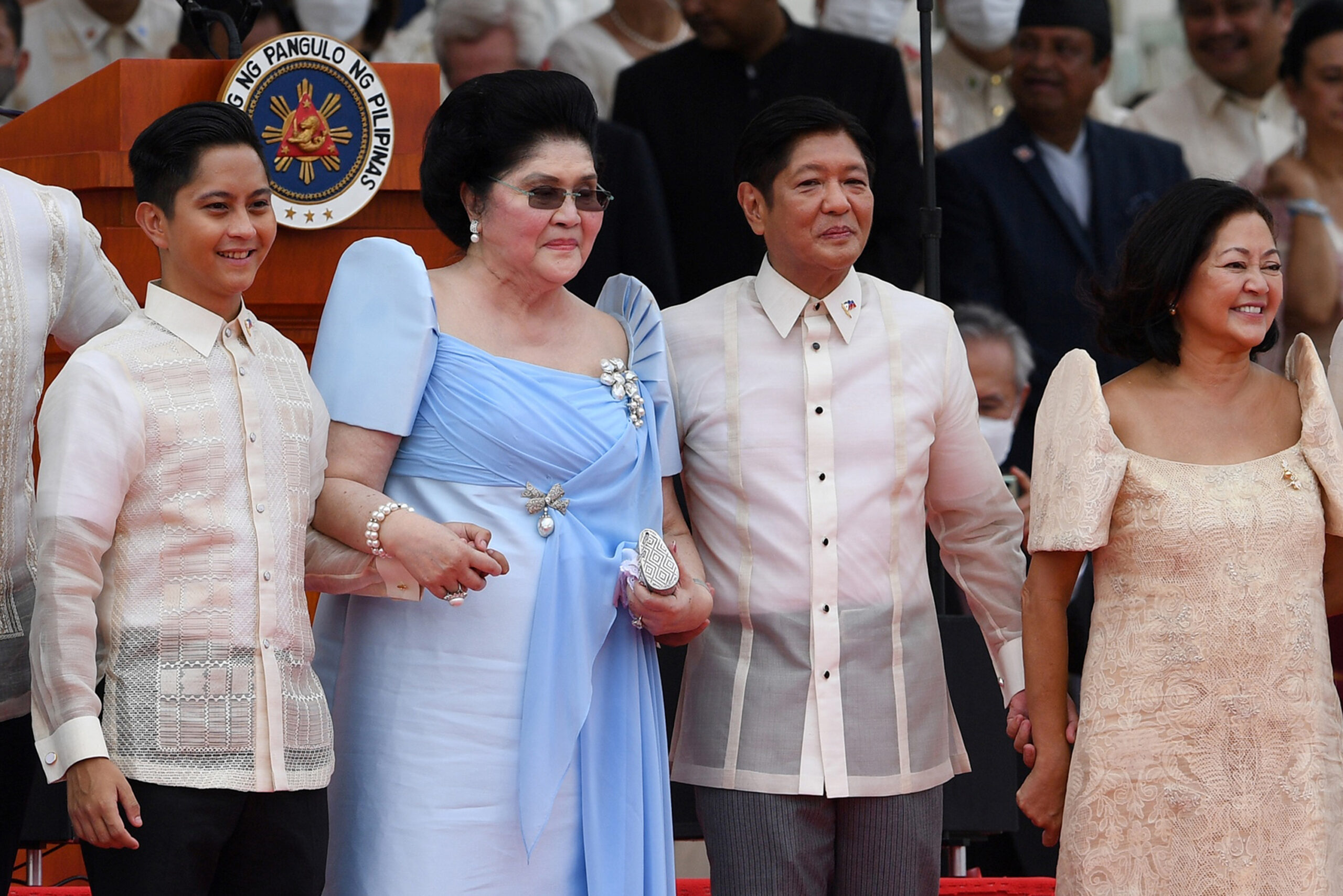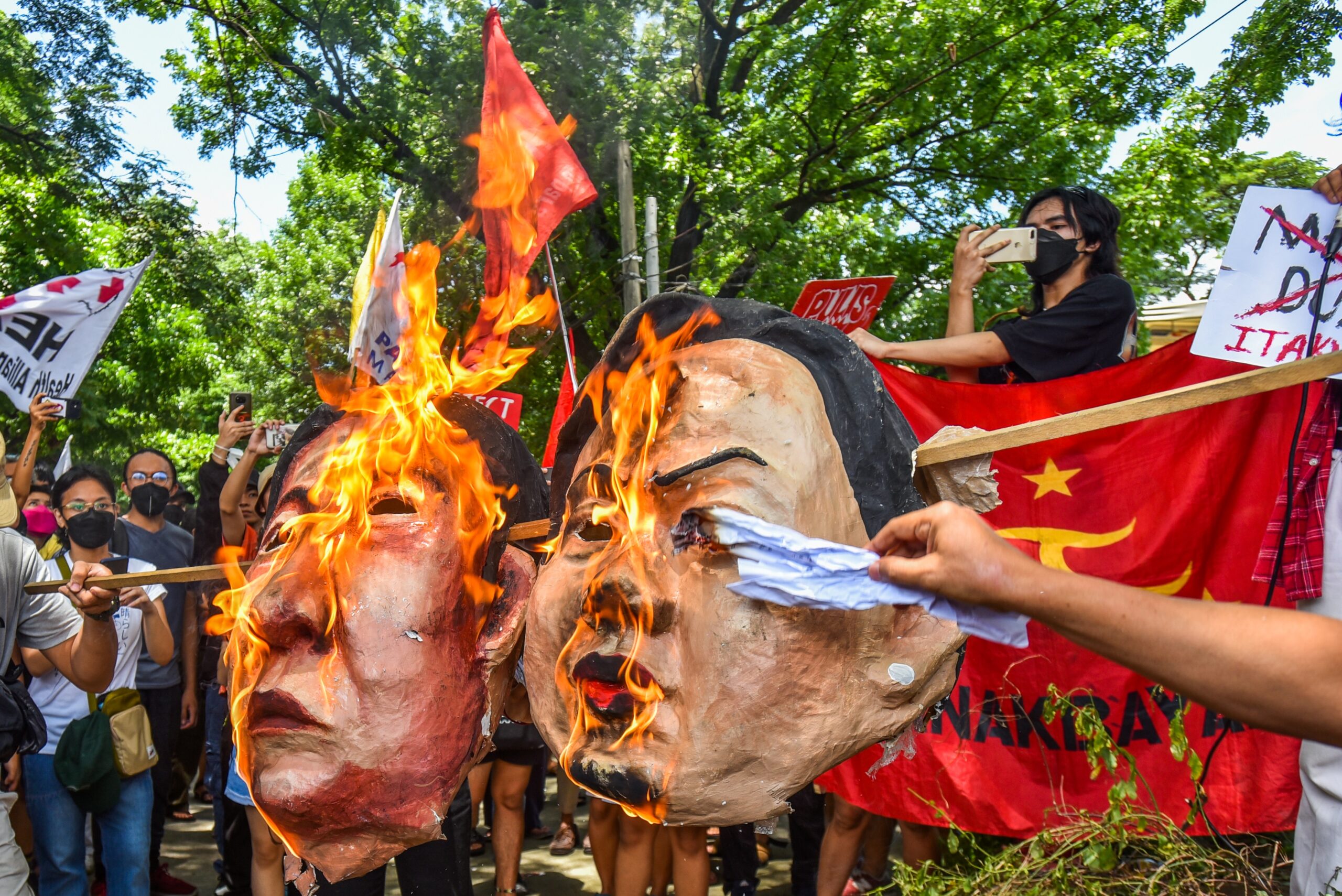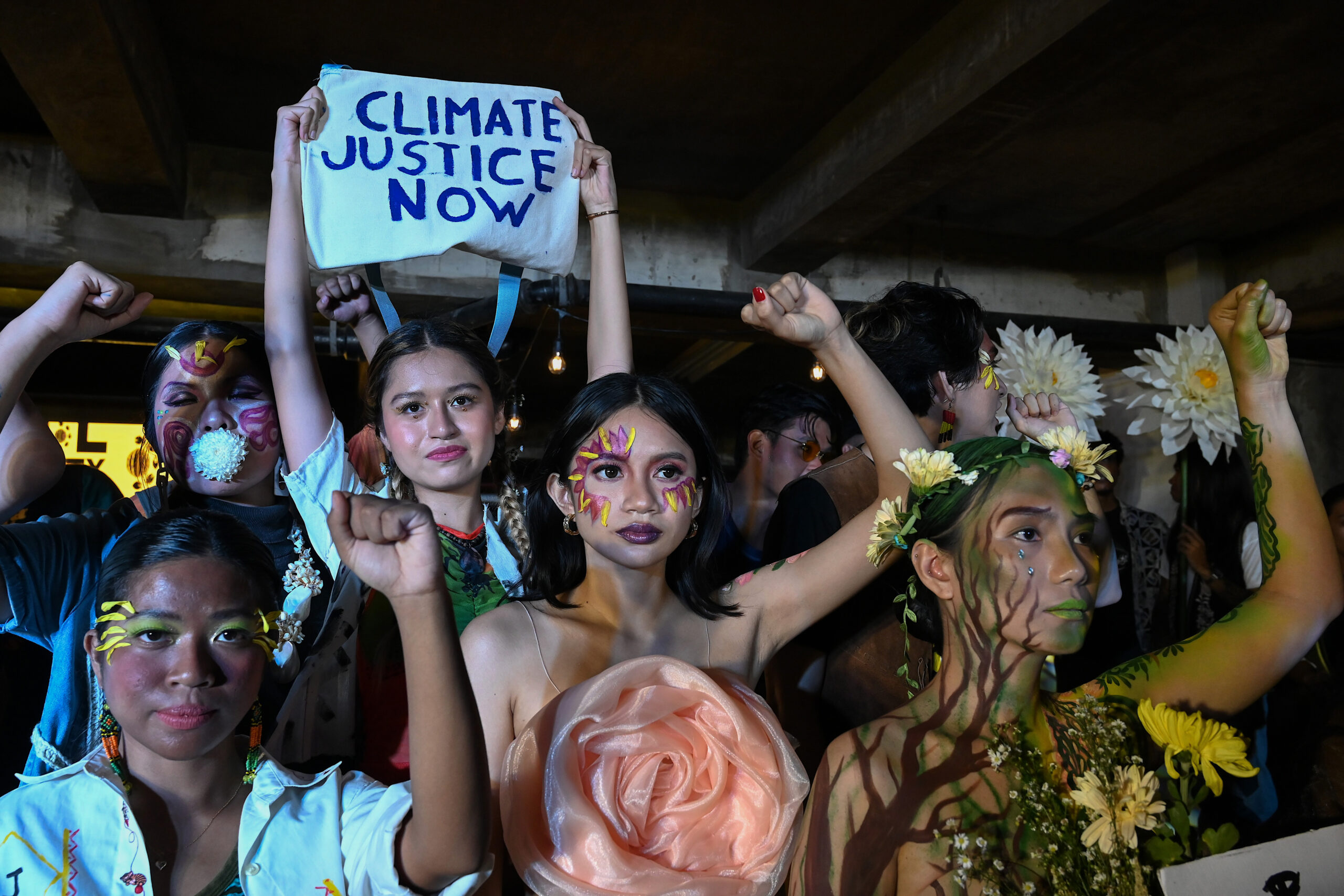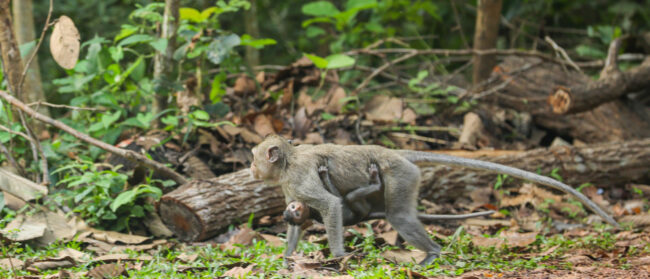Christine Amour-Levar remembers waking up to a quiet and unexpected school holiday. For the author and human rights advocate, the memory sticks out in an idyllic eighties childhood that she lived in a gated community near Manila’s sleek business district. The vacation was a happy surprise.
Then she heard gunshots.
Fighting broke out in the normally quiet local neighbourhood where she lived. Family friends and neighbours instructed teenage Amour-Levar and her family to come downstairs from the upper levels of the house and quickly lay on the floor “as a precaution” from stray bullets.
“The phone lines were down, the roads were blocked and all supply chains were affected,” Amour Levar recounted to the Globe. “I felt anxious because my father was away on a business trip in Tokyo at the time and was unable to return home… Manila International Airport was shut.”
Political discontent had been brewing in the Philippines since the murder of Nino Aquino, one of the most vocal critics of then-President Ferdinand Marcos and his wife Imelda. In 1986, a revolution of millions of Filipinos took to the streets to protest Marcos’s corrupt strongman rule.
The event is just one of the experiences Amour-Levar shares in her latest book, ‘Wild Wisdom: Life Lessons from Leading Teams to Some of the Most Inhospitable Places in the World.’ The memoir charts her journey, growing up in the Philippines, Japan and France, with more recent accounts of leading all-female intrepid expeditions with her two non-profit organisations, Women on a Mission and HER Planet Earth.

A consistent theme, both in Wild Wisdom and in Amour-Levar’s career is the celebration of women’s empowerment and the fight for gender equality. She speaks candidly and with warmth about the resilient female figures who have inspired her, from Aquino’s widow, to her own mother.
Another subject high on the environmentalist and outdoor enthusiast’s agenda is climate change. For Amour-Levar, women’s rights and environmental urgency are inextricably linked.
“70% of the world’s 1.3 billion poor people are women, and as a result, whenever a crisis hits, it is the women who bear the brunt of it,” she told the Globe.
Following our content around the Ubud Writers Festival, celebrating the region’s storytellers and stories, Southeast Asia Globe shares an exclusive interview with Amour-Levar on change, resilience and working towards a fairer future.
How did your own upbringing shape your perceptions of leadership and your own skills as a leader?
Growing up in the Philippines I was surrounded by very strong women in leadership positions. The Philippines is described as a nation of driven women, who directly and indirectly run the family unit, businesses, government agencies and haciendas, or plantation estates. You have to remember, we’ve had two women presidents, one of whom is a hero of mine, Corazon Aquino. Thus, I was brought up to believe that it was natural for women to be leaders in all facets of society.
However, I also became aware of poverty and the great inequality that surrounded me at a very early age. The Philippines has one of the highest rates of income inequality in the world. Close to 20% of the population or about 20 million people, live under the poverty line.
Additionally, the Philippines is one of the most hazard-exposed countries in the world.
The country is especially vulnerable to the impacts of natural disasters and climate change, because of its location on the Pacific Ring of Fire, making it prone to earthquakes and volcanic eruptions caused by the movement of tectonic plates. Thus, every time a natural disaster hits, it completely devastates poor populations in particular.
You describe your childhood in the Philippines as an idyllic period against a turbulent political backdrop. Can you share a bit more about this?
In 1983, following the assassination of the foremost critic of the Marcos dictatorship, Ninoy Aquino, upon his return to the country after three years of exile in the United States, political turmoil started to mount. By 1986, millions of Filipinos took to the streets to overthrow the corrupt and brutal regime of President Ferdinand Marcos. It was called the People Power Revolution. President Marcos and his wife, Imelda, had ruled the Philippines for twenty years. Following the murder of Ninoy Aquino, a huge opposition movement rallied around his widow, Cory Aquino. She stood against Marcos in a snap presidential election that same year, but when Marcos was declared the winner amid massive electoral fraud, huge protests began.
I was a teen at the time and I could not believe this was happening so close to us. Schools were shut for a couple of weeks and, at first, we were thrilled to be at home for this enforced holiday; that is until the fighting began in the streets of our neighbourhood in Makati, near the central business district of Manila, where we lived within a gated community of residences. We could hear gunshots close by and were told to remain on the ground floor of our home, as a safety precaution. I felt anxious because my father was away on a business trip in Tokyo at the time and was unable to return home to us because Manila International Airport was shut. The phone lines were down, the roads were blocked and all supply chains were affected.
Filipinos poured out onto the streets to protect the rebel army officers. Loyal troops refused to fire on the crowds. The protests, fuelled by the resistance and opposition to years of oppression by President Marcos and his cronies, culminated with the absolute ruler and his family fleeing Malacañang Palace to exile in Hawaii.

Ninoy Aquino’s widow, Corazon Aquino was immediately installed as the eleventh president as a result of the revolution. I remember feeling overwhelmed with joy and emotion. We had won. The dictator had fled.
What are the unique challenges that women in Southeast Asia face in the struggle for representation and leadership? Are there any countries that stand out as leaders in this area?
Today, [Southeast Asia] is experiencing a period of immense growth, with a combined economy that ranks fifth largest in the world. The region’s GDP is projected to grow more than 5% over the next five years – 1.5 per cent above the global average. Women are both fuelling and being advanced by this growth, including in the areas of employment, health, education and decision-making.
Yet as a region, according to the recent Global Gender Gap Report 2022, East Asia and the Pacific are towards the middle, at 69.1% and 69%, respectively, in terms of progress towards parity, while South Asia reports the lowest performance, having closed 62.4% of its gender gap in 2022.
This lack of progress extends the wait to close the gender gap to 197 years, due to a broad stagnation in gender parity scores across most countries in the region.
Nevertheless, there are a few other success stories and encouraging indicators of gender equality emerging from the region. Singapore has impressive female health indicators, with life expectancy and maternal mortality rates significantly better than the global average and has been ranked as the safest place for women to live in the Asia Pacific region. And according to a new Deloitte report that came out in January 2022, Singapore has taken the top spot globally when it comes to the percentage of chief executive officer (CEO) roles held by women.
You formed your second non-profit organisation, HER Planet Earth, to address the challenge that women are disproportionately affected by climate change. Why is this and what can be done to tackle the issue? How and why is gender the untold story of climate change?
Female empowerment and climate change are intrinsically linked. 70% of the world’s 1.3 billion poor people are women, and as a result, whenever a crisis hits, it is the women who bear the brunt of it. In many countries around the world, women are among the most vulnerable to climate change and environmental degradation. They are hit the hardest, partly because women make up the larger share of the agricultural workforce, especially in Asia, and tend to have access to fewer income-earning jobs.
Additionally, despite the fact women are the most vulnerable to climate change, they are also a huge part of the solution. And in truth, empowering, investing in and educating women is a very good way to mitigate climate change, especially when we help women build livelihoods that are eco-friendly and compatible and in harmony with nature.
How have recent international events (the pandemic, the economic crisis) impacted progress in the fight for women’s rights and empowerment? How has it impacted environmental action and progress?
Economic fallout from the Covid-19 pandemic is having a harsher impact on women, who are disproportionately represented in sectors offering low wages, few benefits and the least secure jobs. And as we come out of the pandemic, new data shows that men have now recouped most of their job losses since the pandemic began, while women are still struggling to catch up.
In terms of environmental action and progress, I would say the effects have been both positive and negative. In 2020, carbon dioxide emissions fell by 6.4% or 2.3 billion tonnes globally. In April 2020, NOx emissions fell by up to 30%.
Some developed nations introduced so-called “green recovery” economic stimulus packages, aiming to boost economic growth while facilitating renewable energy transition. One of these investments was the European Union’s seven-year €1 trillion budget proposal and €750 billion recovery plan, “Next Generation EU,” which seeks to reserve 25% of EU spending for climate-friendly expenditure.

However, decreased human activity during the pandemic diverted attention from ongoing activities such as accelerated deforestation of the Amazon rainforest and increased poaching in parts of Africa. The hindrance of environmental policy efforts, combined with economic slowdown may have contributed to slowed investment in green energy technologies.
The pandemic also led to increased medical waste. During 2020, approximately 65 billion gloves and 129 billion face masks were used every month, and disposed of. Greenhouse gas emissions resulting from the treatment process of this plastic waste ranged from 14 to 33.5 tons of CO2 per ton of mask, the largest share being from production and transport.
What do you think will be the main factor defining the next stage of environmental action in Southeast Asia?
Southeast Asia is impacted by enormous environmental stress resulting from global warming, urban excess, deforestation, water scarcity, overfishing and pollution. While Southeast Asian nations encourage political actions in favour of economic growth, they struggle to promote sustainable development approaches. Governments claim to work on a balanced approach that compromises both sectors.
The reality of the situation, however, reveals that governments tend to act in contradictory manners in their creations of sustainable economies. Whether it is rising sea levels, the devastation of the rainforests, or greenhouse gas emission, it has become evident that environmental issues do not halt at nations’ borders. Environmental issues ought to be seen as transnational problems.
One of the solutions Southeast Asia could focus on is the protection of its rich biodiversity, which could also create jobs and generate wealth. This could produce benefits valued at more than $2.19 trillion a year – while slowing down climate change – according to a new study published by the Academy of Sciences Malaysia (ASM).
What do you think will be the main factor defining the next stage of the journey towards gender parity and women’s empowerment in Southeast Asia?
For Southeast Asia I believe we need to focus on overcoming the root causes of the gender gap and this means tackling harmful stereotypes and biases, country by country. Efforts to target gender disparity continue to focus on the symptoms of gender inequality rather than the causes. This is evident in Southeast Asia’s labour force, with women representing around 70% of the informal economy, typically working in traditional, lower paying, more vulnerable jobs.
The informal sector excludes women from the social protections of formal employment, such as consistent wages, collective bargaining, gender-sensitive employment policies and legal protections. Women in these jobs also face high rates of sexual harassment, with little or no legal recourse.
Closing gender gaps by improving access to resources and information is not enough. First, harmful gender stereotypes and biases, which remain region-wide, must be tackled. These persistent beliefs and gender norms reinforce patriarchal values, which continue to diminish women and limit their opportunities, personal safety, autonomy, and ability to fulfil their potential.
This means that we can’t simply focus on gender targets. Institutional and systemic change needs to occur if there is to be lasting and sustained gender equality. Underlying social norms and structural factors that preclude women from reaching their full potential must be targeted. Only these measures will ensure the region’s rapid development is planned rather than piecemeal, and comprehensive rather than cosmetic.
Now is the time to dismantle decades of harmful norms that disadvantage women and undermine national progress. Now is the time to address the root causes of gender inequality to give women in Southeast Asia a brighter future.
What role do you think governments have in shaping policy and driving progress when it comes to environmental action and women’s rights?
Governments have a very important role to play in shaping policy and driving progress when it comes to environmental action and women’s rights. Firstly, they need to acknowledge that climate change affects women and men differently. This is important information as they develop policies to reduce emissions and mitigate and cope with the impacts of climate change. Policies that are gender-sensitive – in other words, that consider the particular needs and capacities of both women and men – are more likely to be effective.
You discuss in ‘Wild Wisdom’ various corporations’ social impact efforts and initiatives. What accountability do you think private sector organisations have to support and drive progress when it comes to both female empowerment and environmental action?
To drive change moving forward, corporate social responsibility, gender equality and sustainability need to be at the heart of big corporations, embedded in their business model, aligned with their values and not part of a separate initiative.
This only increases the urgent need for businesses to step up their efforts at a global scale. I believe the biggest problems in our world need trillions, not just billions, of dollars to fix. So, if we are going to make lasting and significant progress, and tackle the challenges of our planet and society, we need corporations, both the companies and the investors, to drive the solutions. This means thinking about supply chains, working on product design and manufacturing processes and distribution. It involves incorporating social and environmental considerations and being transparent and accountable in all their actions.
What is your main aim for the future?
When I think about the geopolitical tensions and worries about the pandemic, war, recession bubbling up to the surface, I am filled with a renewed and even more urgent desire to act on the critical challenges of our time: climate change, inequality, violence against women, mental health, protecting indigenous peoples’ rights, and more committed to rally our collective energies to help fund and scale up sustainable and game-changing innovations and solutions. This is the kind of regenerative world I want to see, and the inspiring individuals, ideas, conversations and passion I’ve witnessed within our growing community of eco conscious changemakers in Singapore and abroad, gives me confidence that we can do it.


